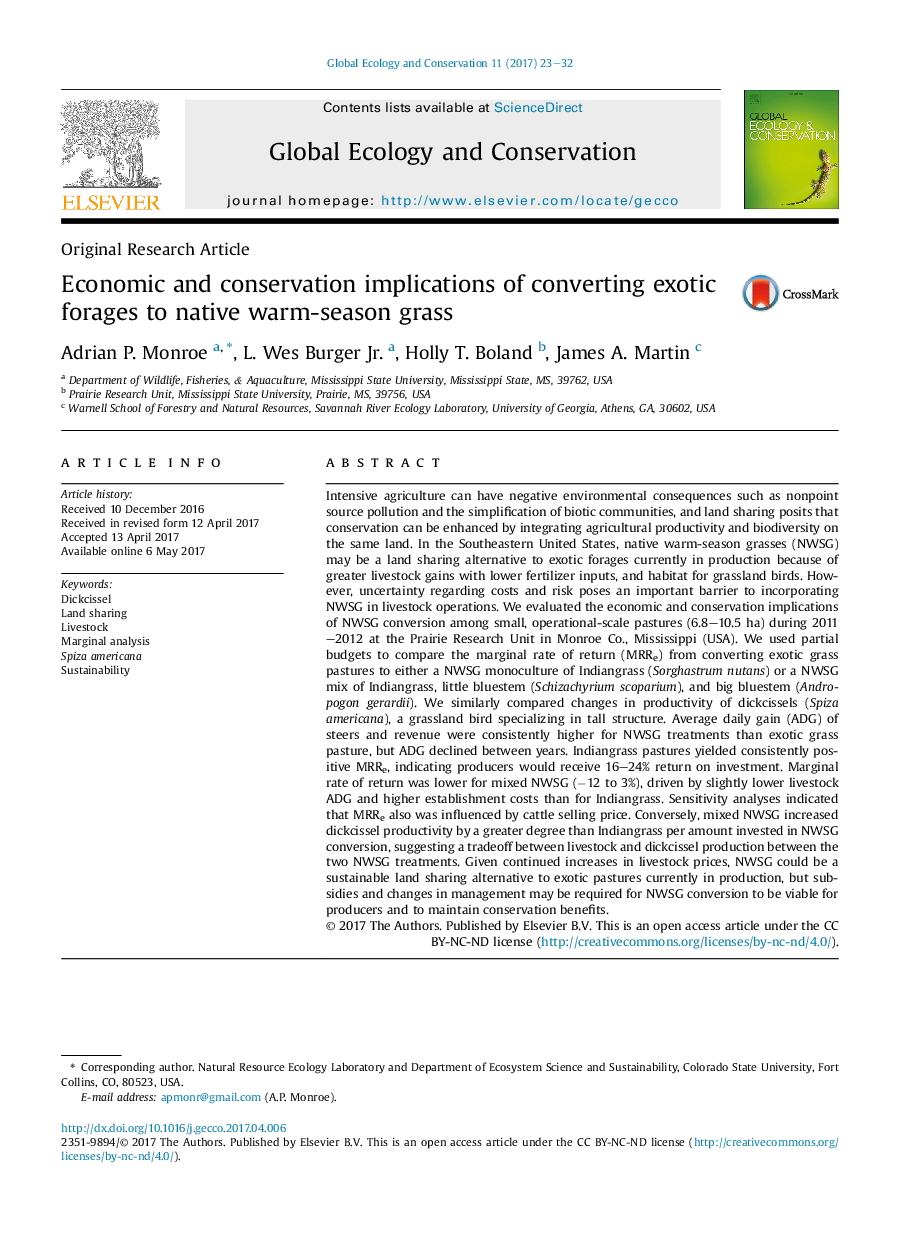| کد مقاله | کد نشریه | سال انتشار | مقاله انگلیسی | نسخه تمام متن |
|---|---|---|---|---|
| 5742396 | 1617656 | 2017 | 10 صفحه PDF | دانلود رایگان |
Intensive agriculture can have negative environmental consequences such as nonpoint source pollution and the simplification of biotic communities, and land sharing posits that conservation can be enhanced by integrating agricultural productivity and biodiversity on the same land. In the Southeastern United States, native warm-season grasses (NWSG) may be a land sharing alternative to exotic forages currently in production because of greater livestock gains with lower fertilizer inputs, and habitat for grassland birds. However, uncertainty regarding costs and risk poses an important barrier to incorporating NWSG in livestock operations. We evaluated the economic and conservation implications of NWSG conversion among small, operational-scale pastures (6.8-10.5Â ha) during 2011-2012Â at the Prairie Research Unit in Monroe Co., Mississippi (USA). We used partial budgets to compare the marginal rate of return (MRRe) from converting exotic grass pastures to either a NWSG monoculture of Indiangrass (Sorghastrum nutans) or a NWSG mix of Indiangrass, little bluestem (Schizachyrium scoparium), and big bluestem (Andropogon gerardii). We similarly compared changes in productivity of dickcissels (Spiza americana), a grassland bird specializing in tall structure. Average daily gain (ADG) of steers and revenue were consistently higher for NWSG treatments than exotic grass pasture, but ADG declined between years. Indiangrass pastures yielded consistently positive MRRe, indicating producers would receive 16-24% return on investment. Marginal rate of return was lower for mixed NWSG (â12 to 3%), driven by slightly lower livestock ADG and higher establishment costs than for Indiangrass. Sensitivity analyses indicated that MRRe also was influenced by cattle selling price. Conversely, mixed NWSG increased dickcissel productivity by a greater degree than Indiangrass per amount invested in NWSG conversion, suggesting a tradeoff between livestock and dickcissel production between the two NWSG treatments. Given continued increases in livestock prices, NWSG could be a sustainable land sharing alternative to exotic pastures currently in production, but subsidies and changes in management may be required for NWSG conversion to be viable for producers and to maintain conservation benefits.
Journal: Global Ecology and Conservation - Volume 11, July 2017, Pages 23-32
